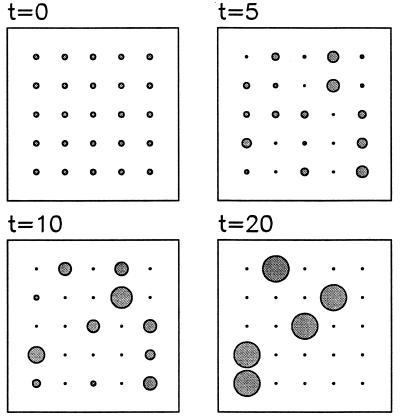Figure 1.
Emergence of a protolanguage in an initially prelinguistic society. The population consists of 100 individuals. Each of them starts with a randomly chosen P and Q matrix. There are five objects and five signals (sounds). In one round of the game, every individual interacts with every other individual and the payoff of all interactions is evaluated according to Eq. 1. The total payoff of all individuals is calculated. For the next round, individuals produce offspring proportional to their payoff. Children learn the language of their parents by sampling their responses to each object. The figure shows the population average of the P matrix; the radius of the circle is proportional to the corresponding entry. Initially, all entries are about 0.25. After five generations some initial associations begin to form, which become stronger during subsequent rounds. At t = 20, each object is associated with one signal. Signal 1, however, is used for two objects, whereas signal 5 is not used at all. This solution is suboptimum but evolutionarily stable. Interestingly, errors during language acquisition increase the likelihood of reaching the optimum solution (M.A.N., J. Plotkin, and D.C.K., unpublished work).

